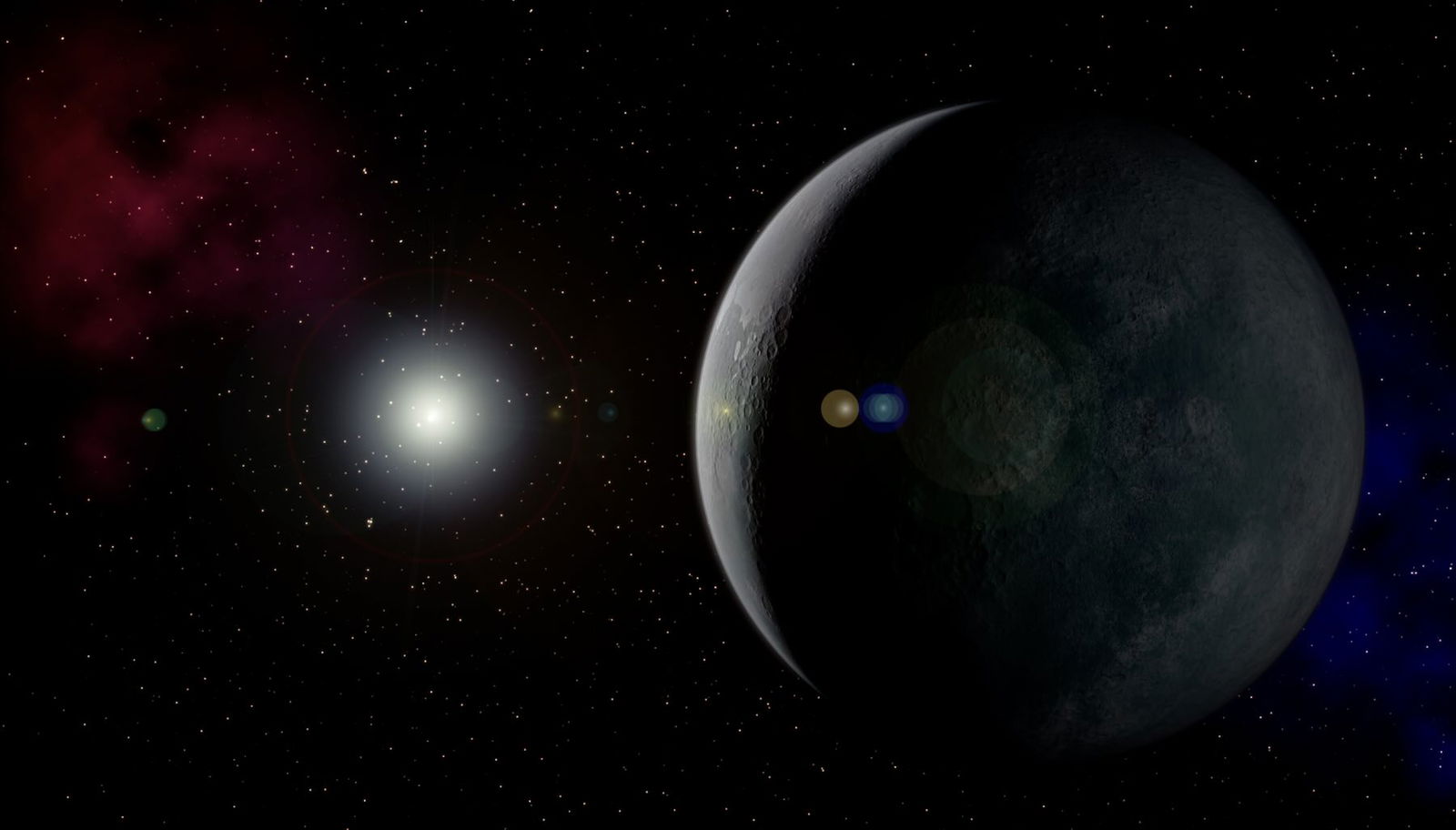A strange tilt in the outer reaches of the Kuiper Belt has scientists wondering if the solar system is hiding another planet—a potential “Planet Y” that could soon join the family of known worlds.
The Kuiper Belt is an enormous ring of icy bodies that extends from the orbit of Neptune to a distance of close to 30 astronomical units (AU), or approximately 30 times the distance from Earth to the Sun. During recent investigations of this mysterious outer solar system region, a team of Princeton researchers uncovered a strange warp in its plane, which could mean that something is pulling on some of the icy objects beyond Neptune—possibly even an undiscovered planet.
Eying the Kuiper Belt
The Princeton team’s work began with a simple question: “Is the Kuiper Belt flat?” Despite some slight deviations, the planets in our solar system all lie on roughly the same plane, which should be reflected in the belt. However, the Kuiper Belt unexpectedly changes this orientation with a tilt of about 15 degrees. Despite the team’s best efforts, most potential explanations failed to account for the unusual warpage, save for one: the potential existence of an unknown body the researchers dub “Planet Y.”
While there has been no direct observation of this currently theoretical planet, the team believes that current data suggests the planet would be between the sizes of Earth and Mercury, positioned deep in the outer reaches of our solar system.
“This paper is not a discovery of a planet, but it’s certainly the discovery of a puzzle for which a planet is a likely solution,” the authors said when presenting their work in the Monthly Notices of the Royal Astronomical Society: Letters.
A New Addition to the Solar System?
This isn’t the first time a theoretical planet has been suspected to lurk in the Kuiper Belt, which once held a recognized planet until one of its largest residents, Pluto, was reclassified as a dwarf planet in 2006. The region remains mysterious due to difficulties in observing it at such great distances.
Earlier work sought what astronomer Percival Lowell dubbed “Planet X,” an attempt to explain away other anomalies by proposing a mysterious hidden planet. Those anomalies were in the orbits of the planets Neptune and Uranus, and even the 1930 discovery of Pluto didn’t prove to be enough to account for them.
However, the mystery resolved itself in a less dramatic way than expected when Voyager 2 probe data revealed Neptune’s mass to be less than speculated in the 1990s. The recognition of a less massive Neptune seemingly resolved the question of the irregularities without requiring the pull of an unknown body.
Planet Y and the Search for Planet Nine
However, the search for a mysterious planet reignited with a 2016 paper speculating on what was now being called “Planet Nine” instead of “Planet X.” However, this long-suspected outer-solar system planetary body differs considerably from what the recent Princeton University research proposes, as this planet would be much larger and farther out beyond Pluto.
There is a great deal of debate over what an undiscovered planet in our solar system might look like, but the Princeton team says that they are not mutually exclusive. In theory, a pair of undiscovered planets could coexist beyond the range of our present observations.
Pentetrating the mysteries of the Kuiper Belt may soon be on the horizon, though, as the Vera C. Rubin Observatory in Chile is about to launch its decade-long survey, which the researchers believe will likely detect any such planet in the Kuiper Belt within two to three years.
Hence, the Vera C. Rubin Observatory may soon be able to finally resolve the question of whether other worlds might exist in our planetary neighborhood, as well as which planetary category the Princeton team’s suspected “Planet Y” belongs to.
The paper, “Measuring the Mean Plane of the Distant Kuiper Belt,” appeared in Monthly Notices of the Royal Astronomical Society: Letters on August 21, 2025.
Ryan Whalen covers science and technology for The Debrief. He holds an MA in History and a Master of Library and Information Science with a certificate in Data Science. He can be contacted at ryan@thedebrief.org, and follow him on Twitter @mdntwvlf.

